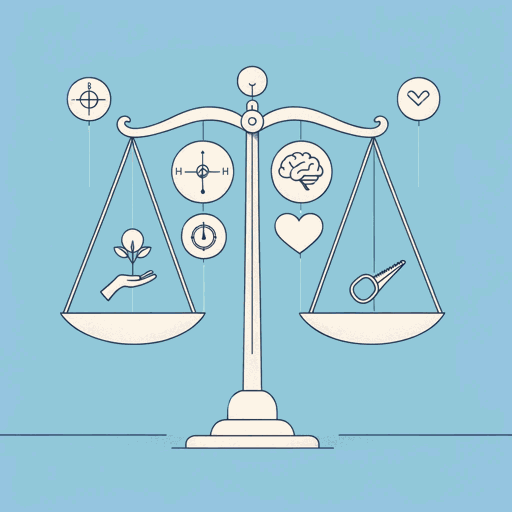82 pages • 2 hours read
Sean CoveyThe 7 Habits of Highly Effective Teens
Nonfiction | Book | YA | Published in 1998A modern alternative to SparkNotes and CliffsNotes, SuperSummary offers high-quality Study Guides with detailed chapter summaries and analysis of major themes, characters, and more. For select classroom titles, we also provide Teaching Guides with discussion and quiz questions to prompt student engagement.
Summary and Study Guide
Overview
The 7 Habits of Highly Effective Teens by Sean Covey was first published in 1998 but was revised in 2014 to meet the changing needs of its audience of tech-savvy teenagers. (This study guide refers to the 2019 Simon and Schuster trade paperback edition.) While the genre is self-help, the book’s focus on young adult readers is evident from Covey’s informal tone, which he uses to narrate entertaining stories about teenagers, as well as the book’s visually appealing format, incorporating humorous cartoons, easy-to-remember lists, and accessible graphics. The book has been an international bestseller, just like the “adult” version of the book, The 7 Habits of Highly Effective People, written by the author’s father, Stephen Covey. The 7 Habits of Highly Effective Teens has been translated into 20 languages and has sold over five million copies worldwide. Sean Covey is also the author of The 6 Most Important Decisions You’ll Ever Make, The 7 Habits of Happy Kids, and The 4 Disciplines of Execution.
From Covey’s Introduction, inviting readers to redefine their lives by understanding and applying the seven habits he outlines, to Covey’s farewell at the end of the book, in which he urges his readers to embrace fulfilling lives, the book goes through each of Covey’s seven habits, defining each and then giving many examples of how various young people have applied the habits in their own lives. The seven habits are divided into groups. The first three habits, forming the first section of the book, are focused on developing independence and self-mastery. The next three habits, forming the second section, focus on interdependence by improving our relationships with others. The seventh habit is the focus of the concluding section, emphasizing the benefits of living a balanced life.
Before discussing the first habit, or “Habit 1,” Covey explains key concepts of his book, paradigms, principles, and the Personal Bank Account. Paradigms refer to the way we see the world. Covey hopes to transform any negative, destructive paradigms we have into inspirational paradigms that can reinvent our beliefs about our potential and place in the world. Principles are the values driving the direction of our lives. The Personal Bank Account (PBA) is the idea that our self-paradigm is similar to a bank account in that both can increase and decrease based on deposits and withdrawals. Deposits are choices we make every day that increase our self-worth, such as keeping a promise to ourselves, being kind, sticking to our principles, or refusing to give in to distractions or temptation. At the same time, we can deplete our account with withdrawals when we break our promises, are unkind, or act dishonestly, for example. Covey wants the reader to be aware of the power of each of these daily choices and how they add up to form our identity.
“Habit 1: Be Proactive” is about learning to shift our paradigms from being passive and reactive to being responsible and proactive. “Habit 2: Begin With the End in Mind” is about discovering our goals in life. Covey urges the reader to take the time to create a personal mission statement to help discover our values, inspirations, and vision for the future. “Habit 3: Put First Things First” is about time management and not getting distracted but instead planning for the future by prioritizing our most important goals.
The second section of the book shifts to focus on our relationships with others. The RBA symbolizes this shift. Covey argues that, just as we can make deposits and withdrawals from and into our sense of self, we can do the same with our relationships with others. “Habit 4: Think Win-Win” covers how to move from a destructive paradigm that views others as a threat to our resources to a mutually beneficial paradigm that views others as treasures who can help us as we work together to create more resources. “Habit 5: Seek First to Understand, Then to Be Understood” again emphasizes the value of others and the need to listen before imposing our ideas. “Habit 6: Synergize” is the culmination of the seven habits because it shows the power of teamwork as cooperation gives ways to creative solutions.
The final habit, “Sharpen the Saw,” encourages us to take the time to recharge our batteries and make sure that we are seeking balance in our lives, physically, mentally, emotionally, and spiritually. Throughout the book, Covey emphasizes the important of personal responsibility, nurturing our relationships, and keeping ourselves in balance to achieve the synergy that comes from mastering the seven habits.








